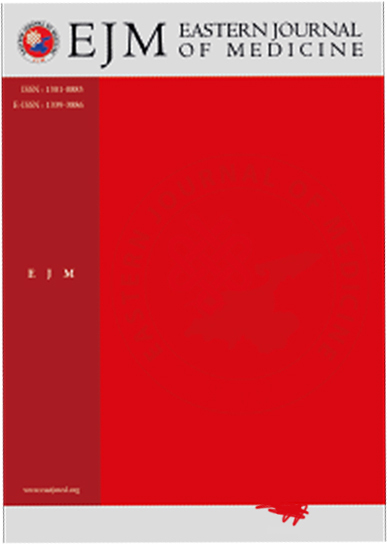Relationship of Cyclin D1 Expression with Histopathological Grading and Metastasis of Breast Cancer: A Cross-Sectional Study
Irvan Tanriliwang1, Salman Ardi Syamsu1, Prihantono Prihantono1, Djonny Ferianto1, John Pieter1, Indra Indra1, Nilam Smaradhania1, Elridho Sampepajung1, Berti J Nelwan2, Abdul Rahman11Division of Oncology, Department of Surgery, Faculty of Medicine, Hasanuddin University-Wahidin Sudirohusodo Hospital, Makassar, Indonesia2Department of Pathology Anatomy, Faculty of Medicine, Hasanuddin University-Wahidin Sudirohusodo Hospital, Makassar, Indonesia
INTRODUCTION: Breast cancer (BC) is still a significant health problem in the world, with hormonal therapy as an essential component in its management. Even though it has been stated that it may play a role in the oncogenesis process, the expression profile of Cyclin D1 has not been further analyzed concerning survival and the incidence of breast cancer metastasis. This study investigates the relationship of Cyclin D1 expression with histopathological grading and metastasis in BC.
METHODS: The research used a cross-sectional study on eligible breast cancer patients in Wahidin Sudirohusodo Hospital and its network hospitals in Makassar. Cyclin D1 expression was examined based on immunohistochemical examination and interpreted using the Allred Scoring method. Histopathological grading is assessed on standard histopathological examination and interpreted based on the Modified Bloom-Richardson Histologic Grading or Nottingham Histologic Score system.
RESULTS: Metastatic status is assessed based on the results of supporting examinations. The Chi-Square test is the primary analysis in this study. Of 57 participants, this study found no association between menopausal status and tumor type and the expression of cyclin D1. In contrast, the luminal subtype of tumor tissue, histopathological grading, and metastasis status were associated with cyclin D1 expression (p<0.01).
DISCUSSION AND CONCLUSION: High expression of Cyclin D1 can be related to the severity of histopathological grading as well as the emergence of metastases to other organs in breast cancer. Future studies with more variables, i.e., Rac1 expression and Paxillin mutase, are required to assess Ccnd1-Cdk4-paxillin-Rac1 and its relationship with BC metastasis.
Manuscript Language: English














